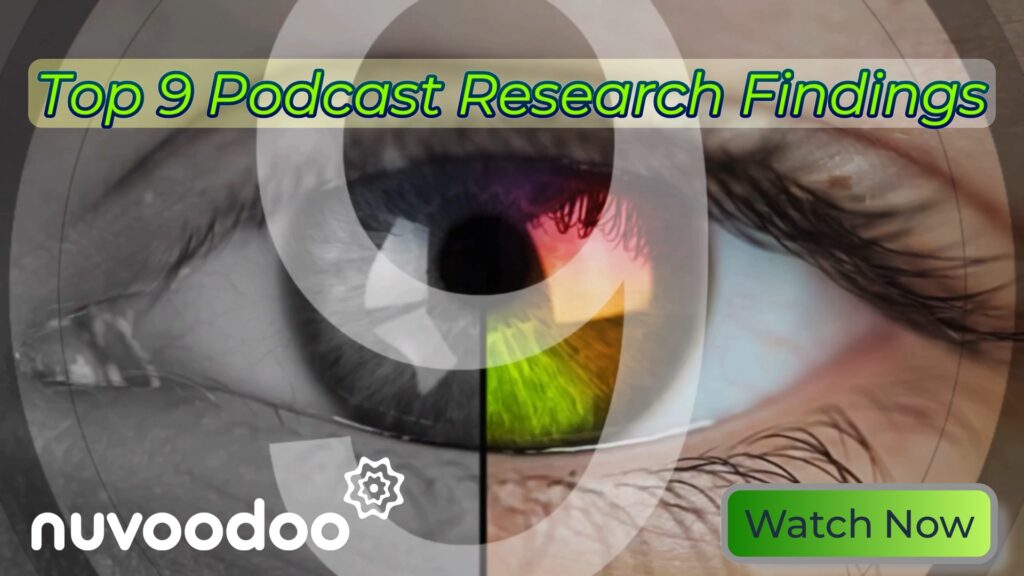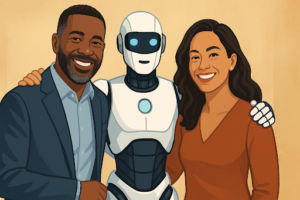Big Advantages for Radio in the Podcast Space

NuVoodoo is releasing a series of videos counting down the top nine things we learned about podcasting in 2022. The videos do a great job pairing up the videos captured in our qualitative sessions with podcast listeners and the quantitative data from our podcast study this summer with nearly 1,700 regular podcast listeners nationwide. You can find the first video at nuvoodoo.com/podcasting.
This first video in the series connects the dots on why it matters that podcast listeners feel they’re more curious and better informed (and many say smarter) than people who don’t listen to podcasts (those opinions make them more valuable to advertisers). The countdown continues until we get to number one in 2023!
Podcasts are a natural extension for broadcasters if we lean into the different competitive environment of podcasting. The competitive environment in radio is often won by least objectionable programming. Listeners choose among stations (usually the ones on presets in a vehicle) and end up with the one that’s the best of that group for them at that moment. It’s a closed environment.
It goes something like this: the listener may expect station A is most likely to play a song they like, but it’s playing commercials just then. So, they pop over to station B which is playing a decent song, but they know it’s toward the end of that song – so they’ll check out station C. The song on station C isn’t as good as the one on station B, but it just started … so station C wins for a few minutes.
Many listeners play the presets during their drive until they get distracted and end up mindlessly listening through a commercial break (while thinking about the yardwork they’re dreading or looking forward to a gathering with friends). These may not even be conscious choices. Stations A, B, and C are playing the odds using researched music to keep the maximum number of meter wearers listening (or maximizing the apparent time spent listening among diary keepers).
The diary methodology favors memorable stations. Even in PPM markets, most stations reflect this type of presentation emphasizing the station’s frequency, name, and/or call sign. PPM markets favor highly-processed audio to enhance meter capture. As producers of audio programming, many in radio end up with a preference for loud, punchy audio – it’s what we’re accustomed to hearing.
The environment for podcasts is different. More listeners are using earbuds or headphones. Even compared with the experience of listening spoken-word radio, the podcast environment is more intimate. While the very best radio hosts relate to listeners one on one, nearly all podcast hosts have picked up that habit – that habit of addressing ONE listener. Many podcast hosts are masters at relating to the interests of that ONE person and how they’re feeling as they hear the podcast.
While repurposed on-air content can be distributed as on-demand audio (we’re thinking of morning show highlights and interview segments) without much retooling for the podcast environment, broadcast producers need to adjust soundscapes and processing for their pure podcast offerings.
Yet those with broadcast experience have a native advantage over pure podcasters: radio hosts are uniquely aware of the ticking of the clock. Experienced radio hosts are far less likely to engage in what’s become known as “banter” in the opening segments of podcasts. Hosts with on-air experience are more apt to think: “Is what I’m saying right now interesting enough to hold the attention of the listener?” “What’s coming up next?” “Should I start that next event/topic/interview/etc. now?”
Radio broadcasters have deep advantages for podcasting: production facilities, experienced hosts and producers, community connections, and – most importantly – the tremendous megaphones of their transmitters. The biggest challenge faced by any would-be podcaster is how to get out the word about their offering. To get the word out about their podcast offerings, broadcasters have their on-air signals, the connections they’ve developed with their databases, social media connections, and other digital avenues. That’s big indeed.




